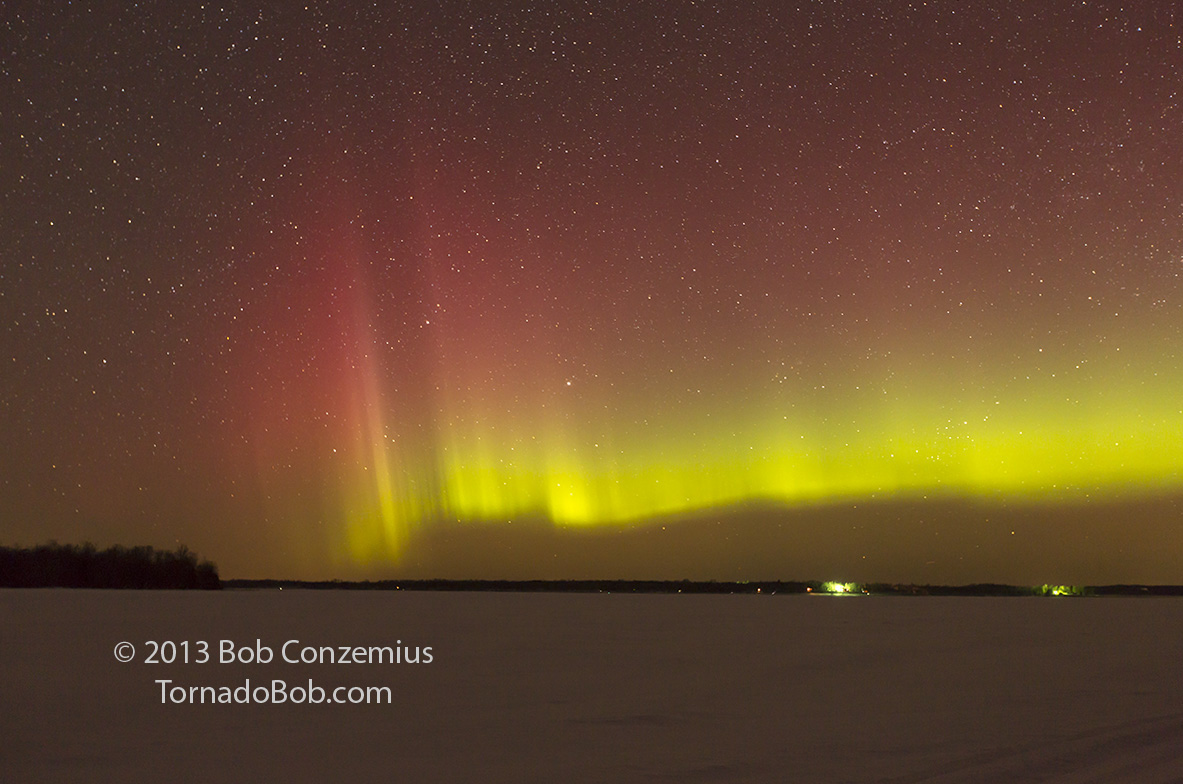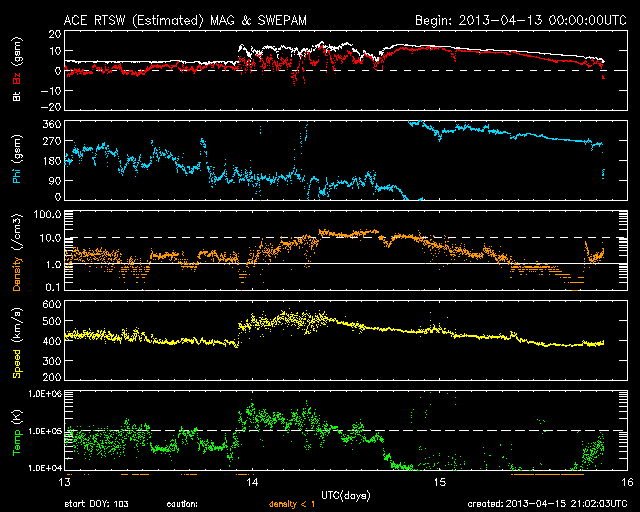April 14, 2013 Auroras
Moose Lake, North of Grand Rapids, MN
On its third trip around the sun, sunspot group 1719 (formerly 1692 and 1678 before that) produced an M-6 category X-ray flare (the second trip four weeks ago had produced the best aurora show of the year so far). This flare produced a coronal mass ejection (CME) that headed towards Earth, impacting Earth's magnetic field on April 13th around 22:45 UTC. While the interplanetary magnetic field went mostly north (this is the wrong orientation for producing auroras), there was enough fluctuation in the field, as well as occasional southward deviations, that some auroras did develop. While there is normally some ice on the lakes at this time of year, it usually is no longer safe, but 2013 brought a pretty unusual April featuring persistently deep snow cover and cold nighttime temperatures, so the lake ice had not even begun to melt. I was able to pick a shooting location on Moose Lake, which is about 10 miles north of Grand Rapids. The ice conditions were like they might typically be in mid-winter with at least a couple feet of solid ice covered in snow, but there was also some scattered areas of slush on top of the ice due to a lot of recent snowfall.
 |
| Looking northwest from the southern side of Moose Lake. The auroral oval connects with the horizon. |
 |
| Looking directly north. I have really bumped up the contrast here to bring out the Milky Way and the snowmobile tracks. |
 |
| Looking directly north. I have really bumped up the contrast here to bring out the Milky Way and the snowmobile tracks. |
Back to Auroras | Home
